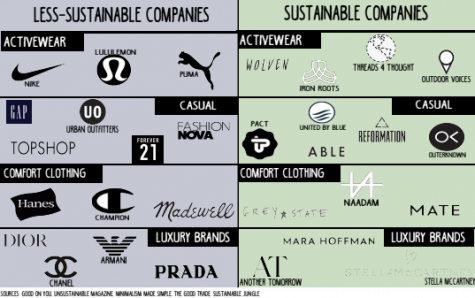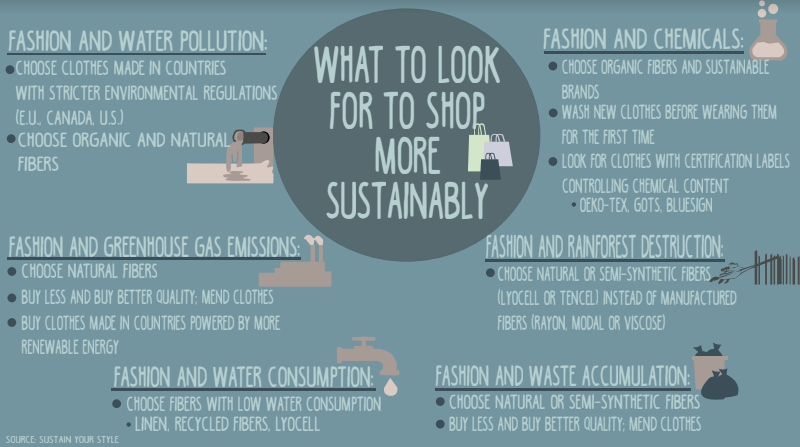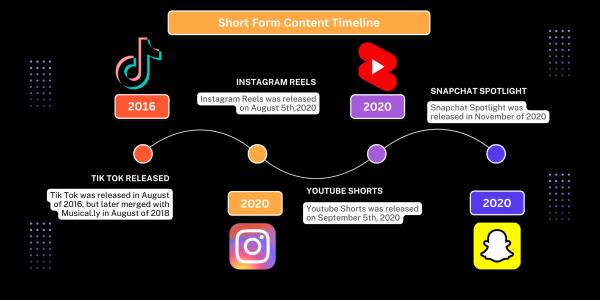The environmental costs of fast fashion
As the fast fashion industry has grown exponentially over the past few decades, consumers have gained unprecedented access to inexpensive and trendy clothing. While this may sound appealing to the average consumer, the fast fashion industry is the second-largest polluting industry in the world, causing detrimental environmental damage and its unethical labor practices only continue to grow, according to leading environmental organizations.
The mass production of clothing created by fast fashion companies is causing damage to the environment at an alarming rate. According to Good on You, a company that rates the sustainability and ethicalness of clothing brands, consumers are buying 60% more apparel today than in 2000, significantly increasing the fashion industry’s production rate over the past 20 years. In addition, the industry is responsible for 10% of the world’s carbon emissions.
Department supervisor for career and technical education, Dr. Debra Kellum, teaches fashion marketing and merchandising at LHS. She explained that one major reason fast fashion brands have grown so drastically over the past few decades is because of the persuasive marketing strategies brands use to promote their clothing.
“The high-end fashion [brands] always have their yearly shows, and if you are anyone or want to be somebody, you’re walking on a runway somewhere trying to get your brands noticed,” explained Dr. Kellum. “So [high-end brands] are trying to get their ideas out there, so then all of the lower-level merchandisers quickly copy knockoffs and get them on the market as quickly as they can.”
Then, the companies advertise the clothing on digital platforms, their newest marketing strategy including ads on social media sites as well as giving their apparel to media influencers to create awareness for the brand and influence their followers to shop.
Companies’ persuasive marketing techniques have created a massive push for consumers to buy large amounts of clothing for inexpensive prices.
“I think a lot of it is just the immediacy of the shipping availability, the products are here,” said Dr. Kellum. “The easy access to ordering it, having it shipped so quickly and paying for [clothing] so easily has definitely allowed these brands to expand.”
In addition, the industry has manipulated consumers into believing that repeating and re-wearing garments and outfits once or twice can be enough time to consider the clothing item old. Fast fashion companies drop new clothing collections weekly, often making consumers feel that their clothing is out-of date and encouraging them to keep buying more. Most of these garments do not get recycled and are instead thrown out; according to Good on You, the average American throws out 81 pounds of clothing yearly and three out of five fast fashion items end up in a landfill.
The inexpensive prices and large selection of clothing come with a cost: the abuse and mistreatment of garment workers by employers. As stated by Labour Behind the Label, a campaign group focusing on labor rights in the garment industry, workers face “poverty pay, long working hours and denial of trade union rights to significant risks to workers’ health and safety through unsafe buildings, heat, lack of ventilation, no access to clean drinking water and restricted access to the bathroom, and use of dangerous chemicals.”

Gender discrimination is also common in factories, whether it be lower wages, harassment or verbal and physical abuse toward women, according to the Clean Clothes Campaign, a global network dedicated to improving conditions of garment workers.
Fashion apparel is also dangerously polluting the environment. Many fast fashion brands use semi-synthetic microfibers such as rayon and viscose and petroleum-based fibers such as polyester and nylon due to their inexpensive manufacturing prices and increased strength and durability compared to natural fibers. Rayon and viscose are plant-based fabrics that are created from the pulp of wood. The increased demand for clothing has led to deforestation and habitat destruction.
Furthermore, polyester and nylon fibers are a type of plastic produced by petroleum that contain thousands of microplastics, so when a polyester or nylon garment is washed, thousands of these microplastics are released into the water, contaminating the Earth’s oceans. According to ethical fashion group Common Place, 35% of microplastics in the oceans are caused by synthetic fabrics.
While fast-fashion clothing may be appealing to many Americans, some individuals in Libertyville and elsewhere are striving to limit their clothing consumption.
Junior Grace Comilla works at Plato’s Closet, a secondhand clothing retailer located in Libertyville, and explained that Plato’s Closet does not rely on donations.
“People come [to Plato’s Closet] with clothes that they want to sell and we look through it and decide usually based on condition and the style of the clothes. With all of the clothes we do decide to pick, we give the [customer] a quote,” she explained. “Our computer system will decide the price of the clothing and will give them a quote of the total amount we can give them and they can choose whether to keep the clothes or accept the price.”
Senior Rebecca Parker also works at Plato’s Closet, and explained that she hopes our society can branch away from very fast trends and stick to fashion items that will last.
“I think fast fashion is something that is hard to get away from, just because it is a huge part of American culture, but I think the best thing we can do is to stay away from that and stick to apparel items that will be sustainable for many years,” Parker said.
Parker has worked at Plato’s Closet since July and explained that she now buys most of her clothes from there because “once you start buying sustainably, you feel this kind of guilt buying from other fast fashion companies like H&M or Forever 21.”
Her sister, Allison Parker, also shops at Plato’s Closet and nearby thrift stores, such as Goodwill and Upscale Rummage, because she knows that they will have clothes targeted towards teenagers and also because she finds it to be fun.
“[By shopping sustainably], I’m hoping to make the environment a little better and know the moral improvement of that,” said Parker.
Senior Emma Bleck also encouraged her peers and community members to implement sustainable shopping into their lives.
”Try to find a thrift store or a vintage shop or even online thrifting that’s a little bit smaller and can work with you, because I know with the huge [thrift stores], it can get super overwhelming,” Bleck said. “I think a lot of times it’s easy to buy a lot of stuff, so make sure you’re donating consistently too because it keeps those stores alive.”







